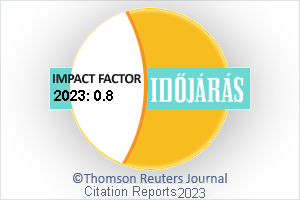IDŐJÁRÁS - angol nyelvű folyóirat
Vol. 126, No. 4 * Pages 425–582 * October - December 2022
 |
|
 letöltés [pdf: 8136 KB]
letöltés [pdf: 8136 KB]
Synoptic circulation patterns associated with foehn days in Sofia in the period 1979–2014
Krasimir Stoev, Piia Post, and Guergana Guerova
DOI:10.28974/idojaras.2022.4.5 (pp. 545–560)
Krasimir Stoev, Piia Post, and Guergana Guerova
DOI:10.28974/idojaras.2022.4.5 (pp. 545–560)
IDŐJÁRÁS folyóirat

Az IDŐJÁRÁS a HungaroMet Nonprofit Zrt. negyedévenként megjelenő angol nyelvű folyóirata
Megrendelhető a journal.idojaras@met.hu címen.
A szerzőknek szánt útmutató itt olvasható.
Megrendelhető a journal.idojaras@met.hu címen.
A szerzőknek szánt útmutató itt olvasható.









